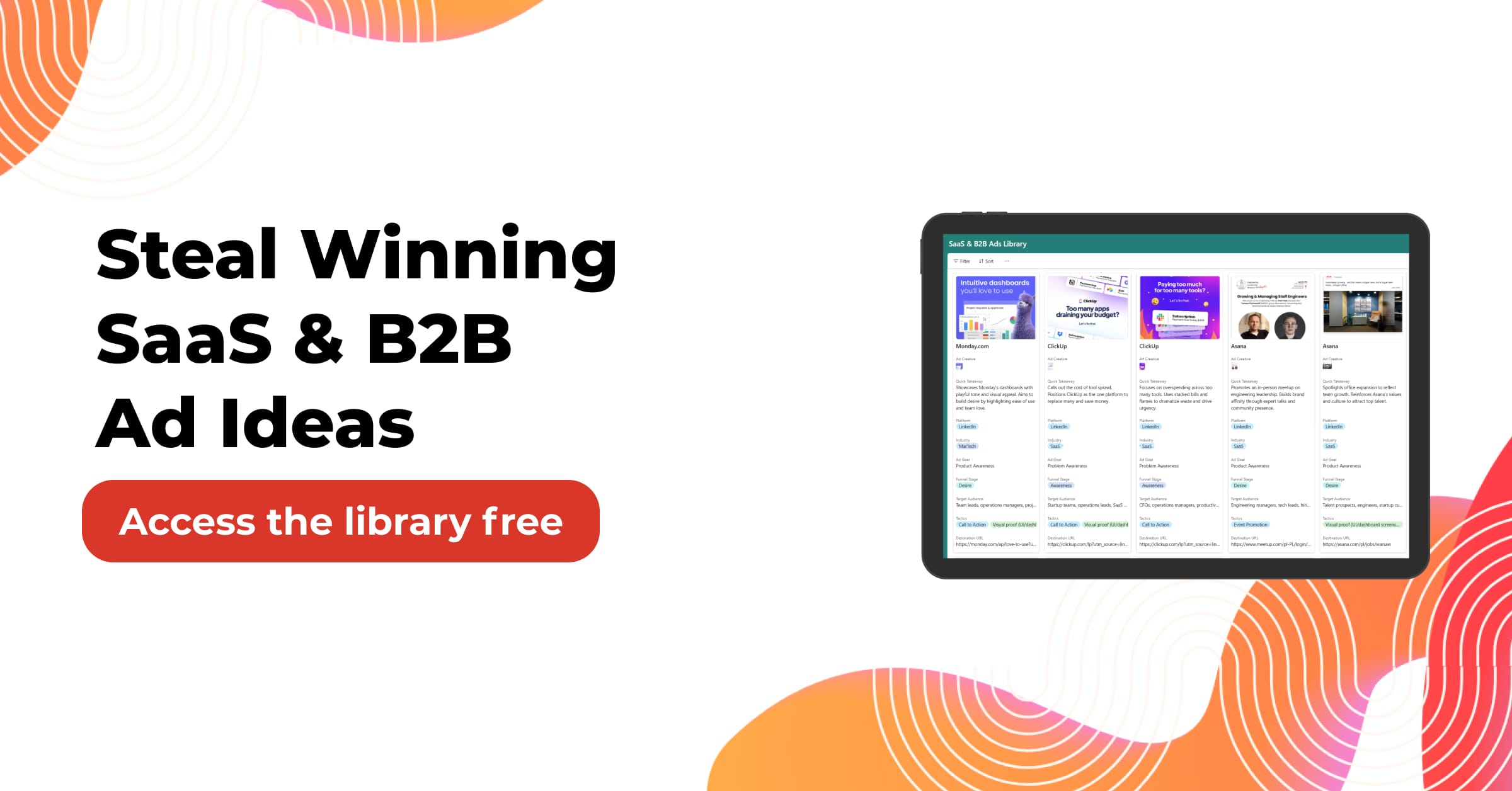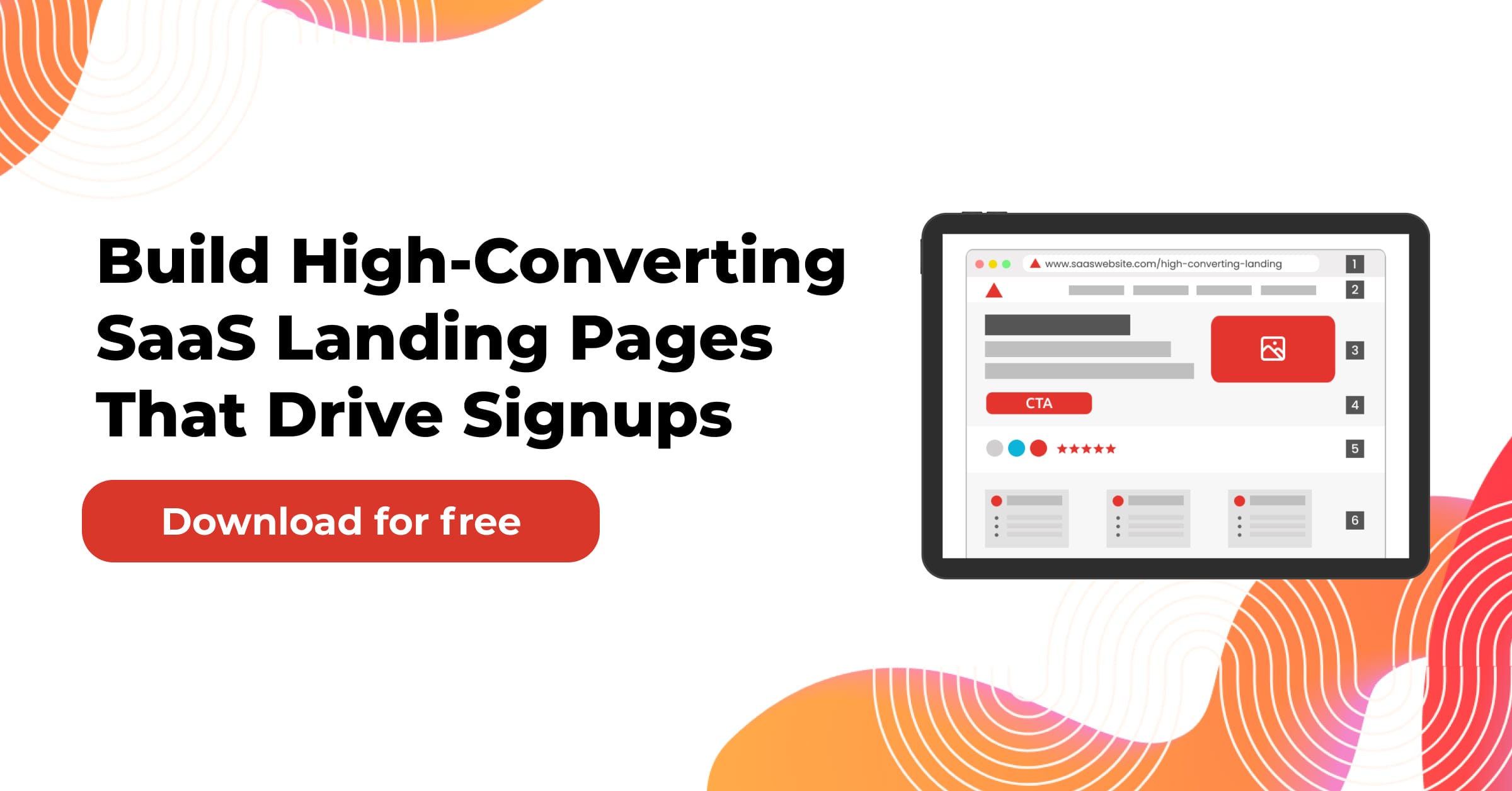In the ever-evolving SaaS landscape, a quiet revolution is reshaping how software is built, marketed, and scaled.
It’s called Vertical SaaS—and it’s making generalist platforms rethink their place in the world.
Is this the end of broad, catch-all tools? Or simply the rise of something more tailored, more human?
Let’s dive in.
Table of Contents
What Is Vertical SaaS and Why Should You Care?
It refers to software that targets a specific industry or niche, offering highly customized features, workflows, and integrations tailored to that market.
Think of platforms built only for dentists, real estate brokers, restaurant chains, or legal professionals. Every field has its nuances, and it exists to serve those nuances better than any horizontal tool ever could.
By contrast, generalist platforms like Salesforce, HubSpot, or Trello try to serve everyone. However, when you try to serve everyone, you often end up resonating deeply with no one.
The Rise of Industry-Led Innovation
This isn’t just about better software—it’s about an insider’s view into real operational pain.
When someone builds a product from the industry rather than for the industry, the result is innovation rooted in relevance. This has led to tools that automate outdated manual processes, ensure compliance, and adapt faster to regulatory changes.
The success of these tools is not just technological—it’s cultural. They speak the language of the user.
Related Article: https://www.adlabz.co/elon-musks-xai-its-implications-for-ai-powered-saas
What Makes Vertical SaaS So Powerful?
The magic lies in specificity. Here’s what that translates to in practice:
- Language that speaks directly to the user (e.g., “patient intake” instead of “form builder”).
- Workflows that reflect the real daily tasks of that niche.
- Integrations with tools used only in that industry.
This specificity makes onboarding easier, increases satisfaction, and builds long-term trust.
Customers don’t feel like they’re hacking a general tool to make it work—they feel like the software was built just for them.
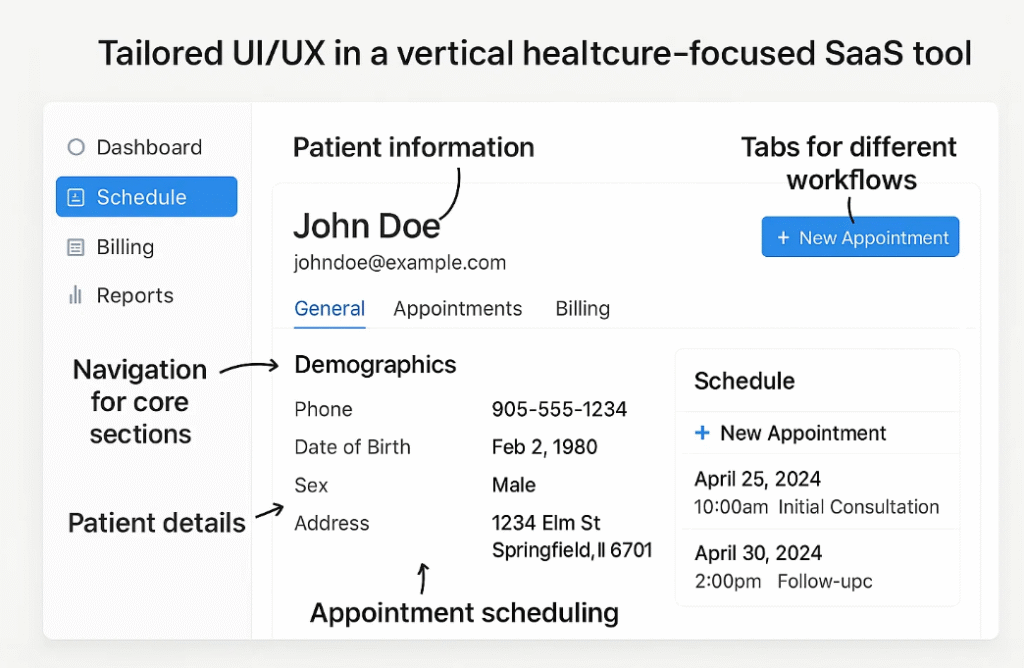
Why Founders Are Flocking to Vertical SaaS
Founders today want:
- Faster product-market fit
- Easier go-to-market
- Loyal customers
And Vertical SaaS delivers.
Let’s break this down:
1. Lower CAC (Customer Acquisition Cost)
Because your audience is narrowly defined, your marketing can be hyper-targeted. One podcast, newsletter, or trade show might be all it takes to start closing deals.
2. Higher Retention
When software mirrors a customer’s reality, switching becomes painful. The more the product blends into daily operations, the harder it is to leave.
3. Word-of-Mouth Magic
Niches are small. People talk. If you build something great for a tight community, referrals spread fast.
The Vertical SaaS Sales Advantage
Selling a vertical SaaS product is dramatically different from selling a general tool.
Because the pain is specific and the product is purpose-built, many SaaS products can skip lengthy demos and move straight into use cases.
Instead of saying, “Here’s what we can do,” you say, “Here’s how we already solved your problem.”
That trust accelerates deals.
How Vertical SaaS Outperforms Generalist Platforms
Let’s compare real strengths:
- Sales cycles are shorter: Less time explaining how your tool works for them.
- Support teams are more effective: They understand the context better.
- NPS scores tend to be higher: Customers feel seen and supported.
- Expansion revenue is stronger: Upsells make sense when you solve deep, industry-specific pain.
Example? Look at Toast—software built for restaurants. POS, payments, payroll, loyalty programs—all in one vertical stack. You’d be hard-pressed to get that tight of an experience from a generalist system.
Real-World Vertical SaaS Success Stories
Here are companies crushing it with the vertical play:
- Procore (construction management)
- Vetcove (veterinary supply ordering)
- Clio (legal practice management)
- Shopmonkey (auto repair shops)
What they all have in common:
- Deeply tailored feature sets
- Customer support teams with industry knowledge
- High ARPU (Average Revenue per User)
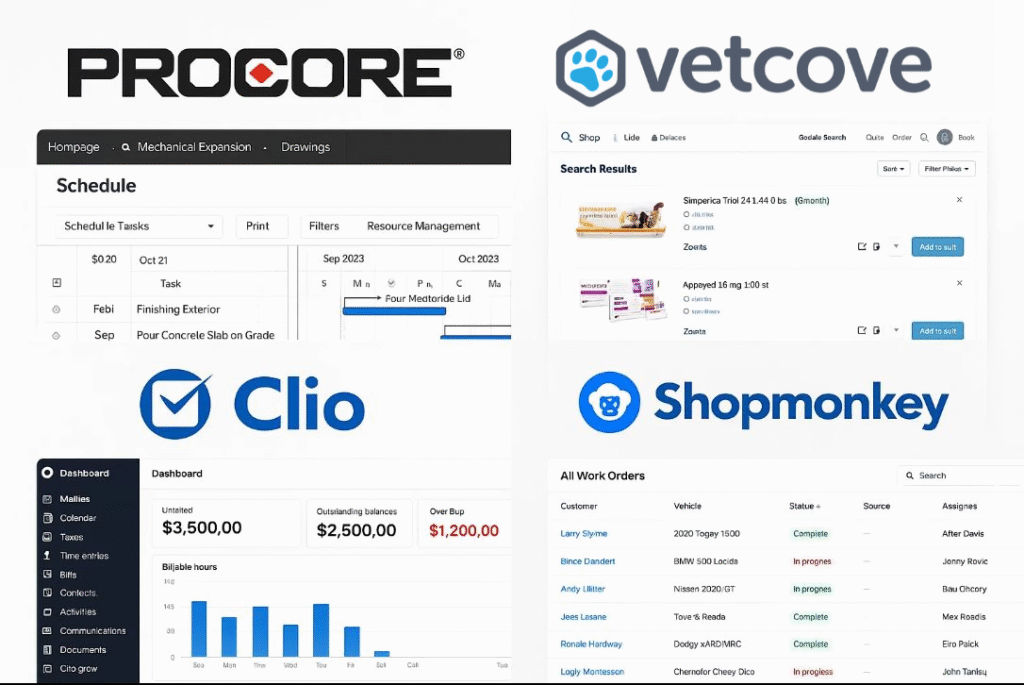
What Are the Risks of Vertical SaaS?
While the upside is massive, vertical SaaS also carries risks:
- Market saturation: Niches can only support so many players.
- Scaling too fast: Jumping into adjacent verticals too soon can break the product.
- Dependence on industry cycles: If your niche crashes (e.g., events during COVID), so do you.
The solution? Focused expansion. Win one vertical fully before branching out.
Can Generalist Platforms Still Compete?
Yes—but only if they adapt.
Here’s how generalist platforms are fighting back:
1. Templates & Modules
Platforms like Notion or ClickUp offer industry-specific templates, trying to mimic vertical depth.
2. App Ecosystems
Shopify, for example, lets partners build niche functionality via apps. It becomes a pseudo-vertical experience without Shopify building it all themselves.
3. Acquisitions
Big platforms buy smaller vertical players to absorb their audience and tech.
But here’s the truth: vertical SaaS often delivers better out-of-the-box value.

Choosing What to Build: Vertical vs. Horizontal
If you’re building software today, here’s the core choice:
- Vertical SaaS: Solve deeply for a small group
- Horizontal SaaS: Solve broadly for a big group
Here’s how to evaluate:
Do you have insider knowledge?
If you’ve worked in veterinary medicine or construction, you understand the pain better than anyone.
Can you find and reach your audience easily?
Local meetups, trade publications, niche YouTube channels—these work for vertical SaaS in ways they don’t for horizontal.
Is the pain you’re solving mission-critical?
The best platforms are embedded in daily operations. They’re essential, not nice-to-have.
Is There a Limit to Vertical SaaS?
Vertical SaaS often gets criticized for having a small TAM (Total Addressable Market).
But here’s the secret:
- You can go deeper: Sell financial services, offer premium support, build analytics modules.
- You can go adjacent: Expand from dentists to orthodontists, from mechanics to tire shops.
- You can go global: What works in North America might be missing in Europe or Asia.
SaaS companies tend to be highly profitable due to low churn and high LTV.
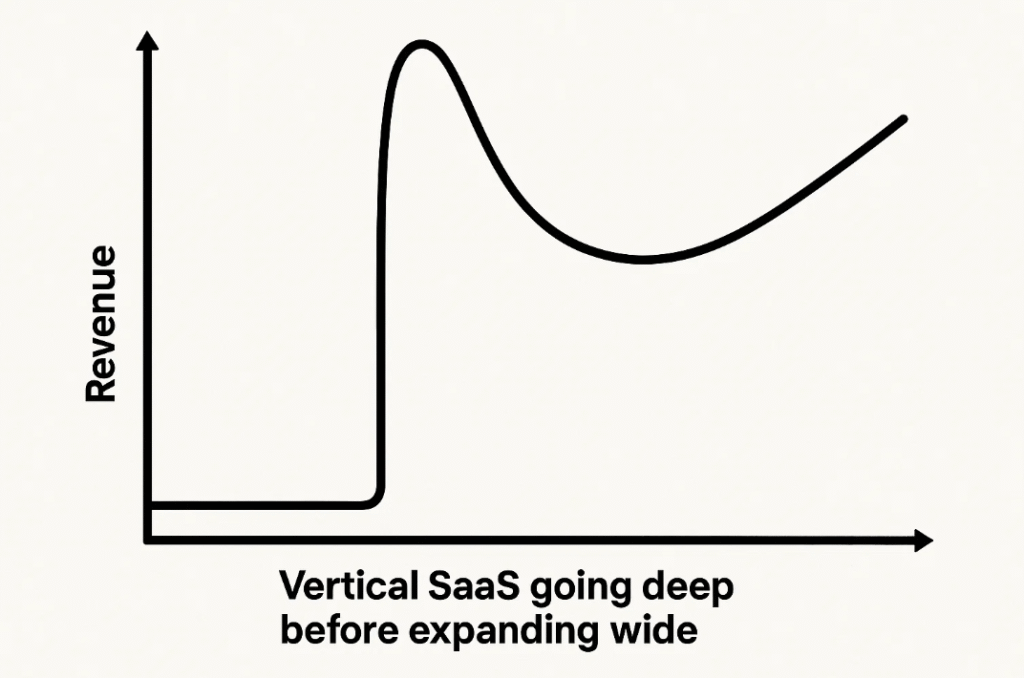
What This Means for Investors
Investors love predictability. And Vertical SaaS offers:
- Higher retention = more revenue predictability
- Clear buyer personas = focused sales and marketing
- Strong gross margins = healthier unit economics
The downside? Vertical markets can cap growth unless you expand vertically (more services) or horizontally (more industries).
Still, many investors prefer $50M revenue in a tight niche over $100M in a leaky, broad market.
What This Means for Buyers
If you’re evaluating tools for your team:
- Generalist SaaS gives you flexibility, but often requires more setup.
- Vertical SaaS gives you instant relevance, but might lock you into a specific way of working.
Questions to ask:
- Does this tool solve my exact use case?
- Can I onboard without training a team of consultants?
- What’s the support like? Do they understand our industry?
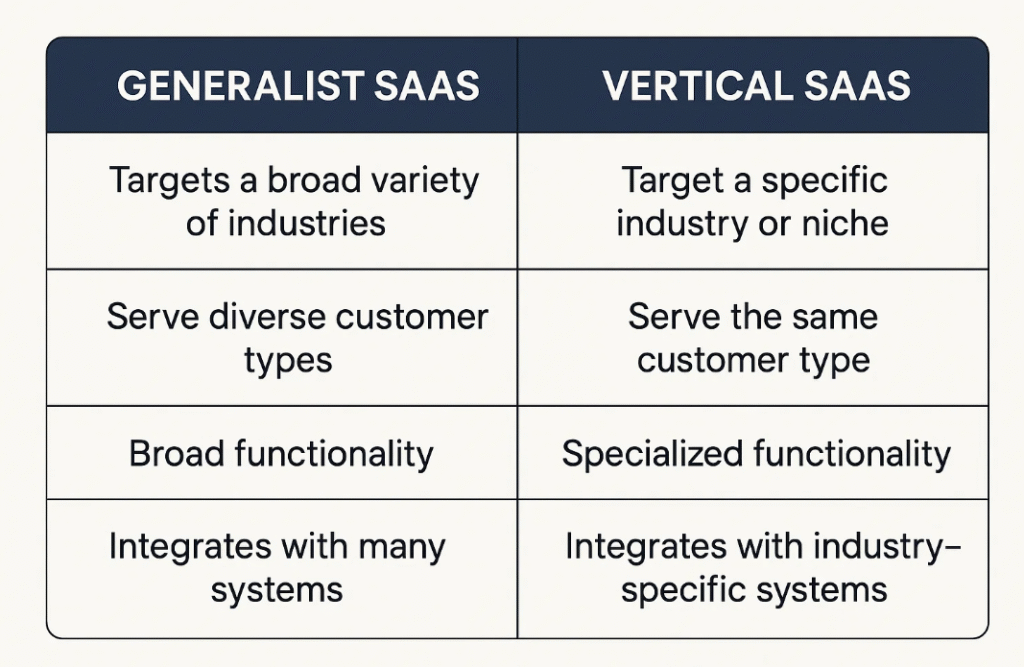
What the Future Holds: Vertical and Beyond
The future might not be only vertical.
The most forward-thinking companies will blend the best of both worlds—modular platforms with deep vertical experiences built atop them.
Imagine a world where startups don’t have to choose. Where APIs, prebuilt components, and AI allow for both vertical precision and horizontal flexibility.
We’re closer than you think.
The Role of AI in Supercharging Vertical SaaS
One of the most exciting frontiers in Vertical SaaS is the integration of AI. Because these platforms are so focused, they accumulate highly structured, industry-specific data. That makes them perfect candidates for AI-driven optimization.
AI can power:
- Predictive scheduling in healthcare
- Automated compliance checks in legal tech
- Inventory forecasting in restaurants
The possibilities are endless when machine learning models are trained on tightly scoped, high-quality data.
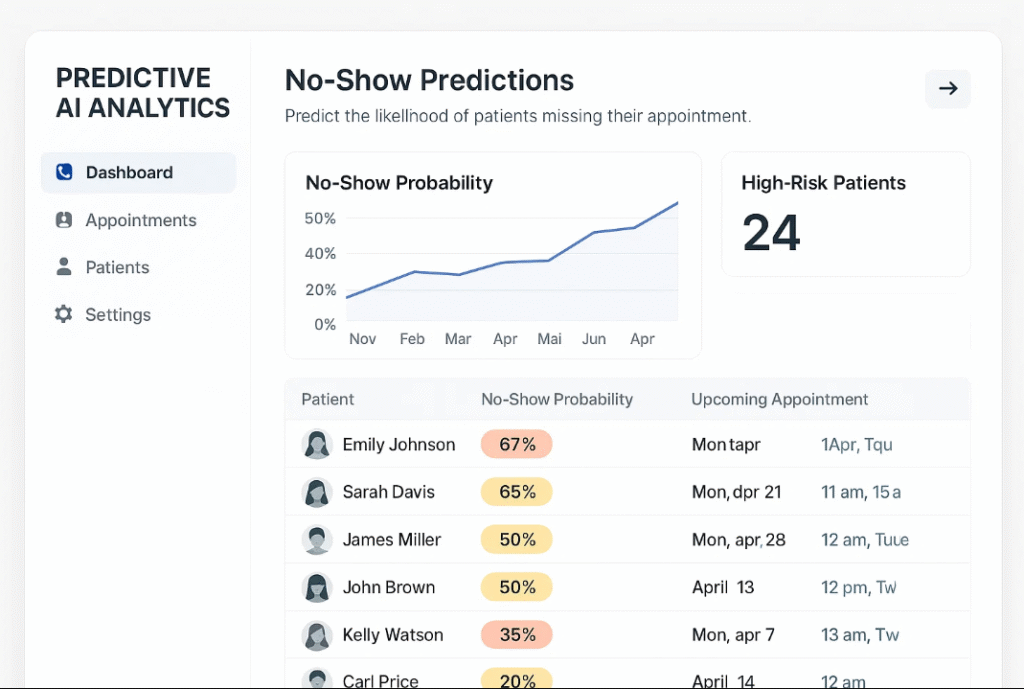
How Vertical SaaS Builds Stronger Communities
Vertical SaaS platforms often extend beyond tools—they become communities. By serving tight-knit industries, they host:
- Private forums
- Webinars with industry experts
- Benchmarks and annual reports based on user data
This creates a powerful flywheel: the more value users get from the community, the more loyal they become to the product.
Platforms like Clio (for lawyers) and JaneApp (for health professionals) have entire content ecosystems that drive retention.
Marketing for Vertical SaaS vs Generalist SaaS
Marketing a Vertical SaaS product is entirely different from a horizontal one. Instead of broad PPC ads and generic email funnels, vertical players focus on:
- Partnering with trade associations
- Speaking at niche conferences
- Publishing on industry blogs
This approach keeps CAC low and authority high. Every touchpoint reinforces the message: “We get you.”
Vertical SaaS and the Future of Work
As the workforce becomes more distributed and specialized, the demand for tools that understand specific job functions increases.
Vertical SaaS aligns with the gig economy, remote teams, and contract-heavy industries because it reduces friction. It helps non-technical professionals do technical work without compromise.
In fields like mental health, elder care, and blue-collar services, this shift is especially visible.
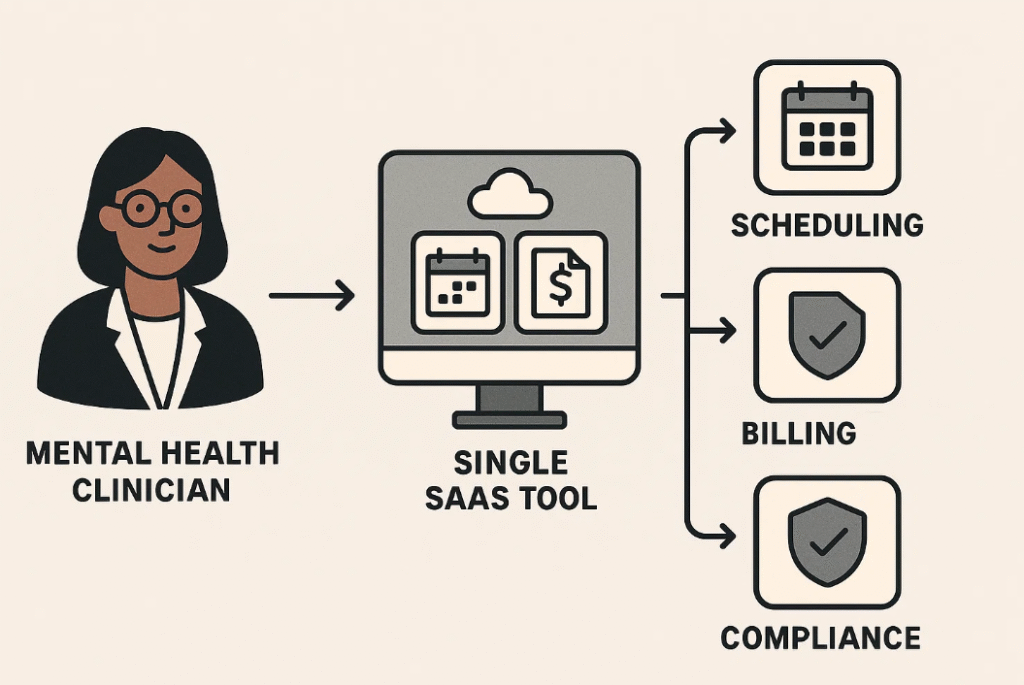
What VCs Are Now Looking for in Vertical SaaS Startups
A few years ago, many VCs wanted broad platforms that could scale fast. Now, many are prioritizing:
- Deep founder-market fit
- Proof of retention and NRR (Net Revenue Retention)
- Strong community engagement
They know vertical SaaS can be slower to start but often compounds more reliably over time. It’s a marathon play, not a sprint.
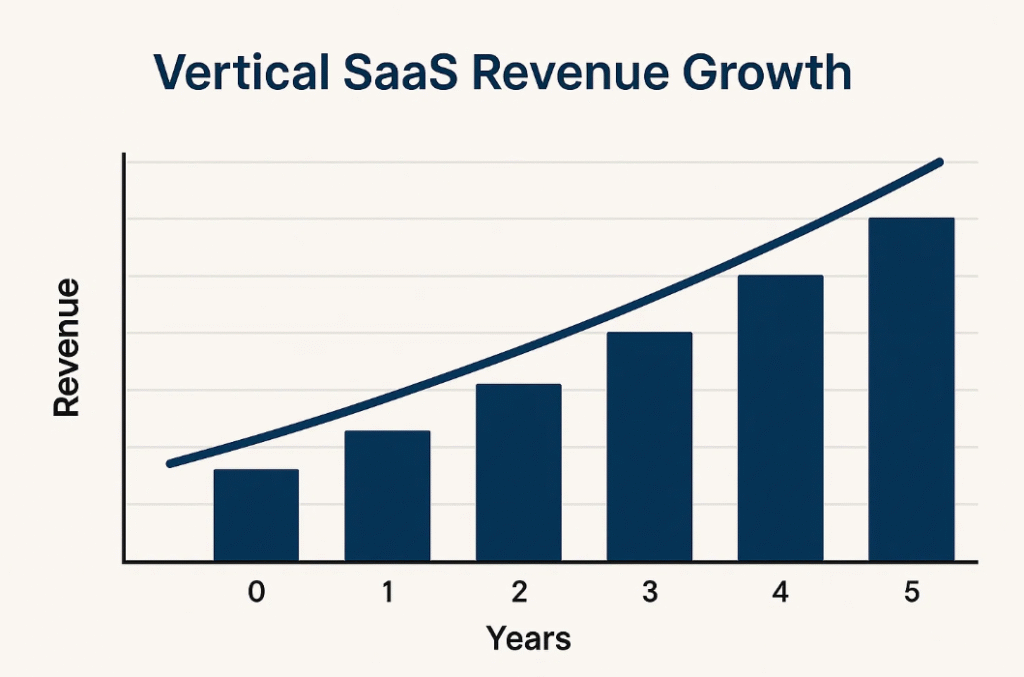
Conclusion: Where the Smart Money and Talent are Going
If you’re building, investing, or choosing SaaS tools in 2025 and beyond, you can’t ignore the rise of vertical platforms.
The smartest founders are diving deep into niches. The smartest investors are backing them. And the smartest buyers are tired of bloated tools that don’t speak their language.
Vertical SaaS isn’t just a trend.
It’s a smarter, sharper way to solve problems.
You might also be interested:




